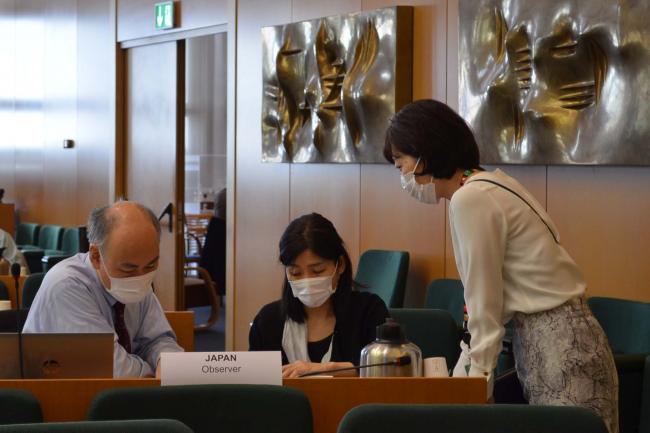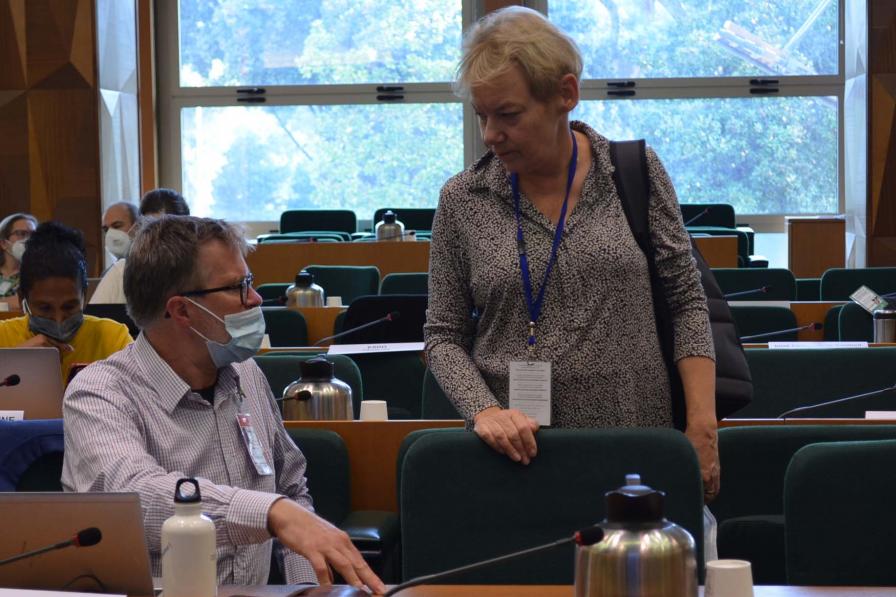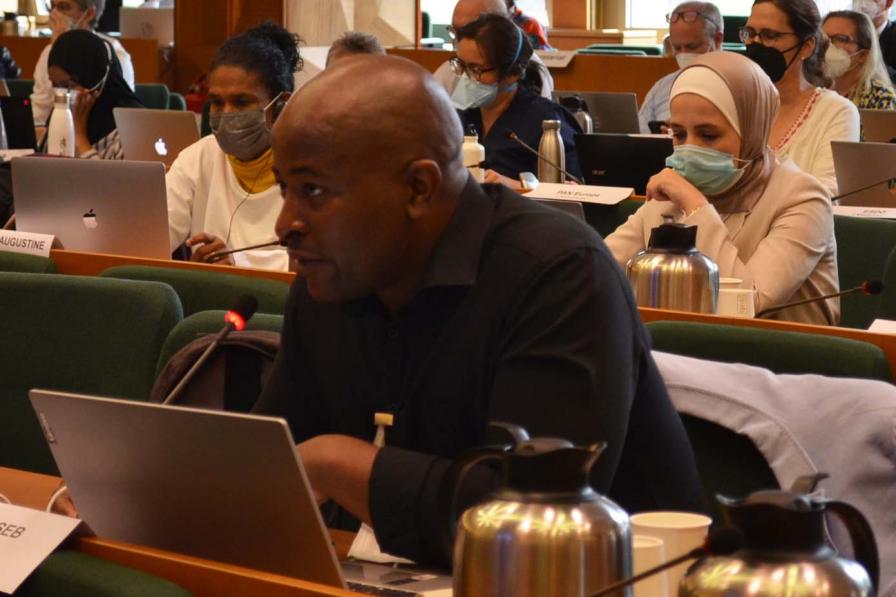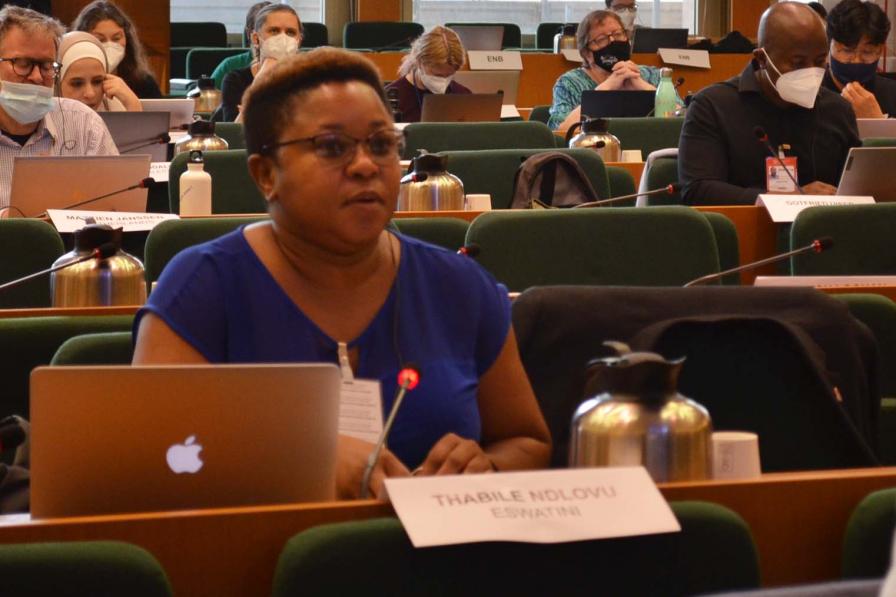At the midweek mark it was time to roll up sleeves and craft text on screens. Participants at the Persistent Organic Pollutants Review Committee (POPRC) worked throughout the day in contact groups to continue their expert reviews of the risks posed by chemicals and potential management options.
Two time slots were devoted to UV-328, a UV filter added to plastics. POPRC is reviewing the draft risk management evaluation for this chemical. This is the final stage of POPRC’s review, which could, if they agree, lead to a recommendation for eliminating or restricting the use of this chemical.
Dechlorane Plus is also at this stage of review. POPRC participants focused on which uses might require exemptions from an overall elimination of production and use of the chemical. In the contact group, participants worked on crafting text that clearly conveys information on where POPRC has indications that safe and effective alternatives may not be readily available in the short term. These conversations focused on the time-frame of these potential exemptions, including for aerospace and defence applications.
Participants also discussed “medium chain chlorinated paraffins” and made progress through much of the document, although further discussion of the scope of the listing may be required. This group of substances includes chemicals that vary by their chain length and the level of chlorination, making for a technically-tricky discussion.
Similarly a complicated group of chemicals, long-chain perfluorocarboxylic acids, their salts and related compounds (LC-PFCAs), were discussed. Participants discussed how to reflect the evidence and uncertainties across all the chemicals included in the group, while still drawing conclusions about the group as a whole. The group cleared outstanding questions in the draft risk profile, and forwarded a draft decision for consideration by the Committee.
Chlorpyrifos is the only pesticide on the agenda. In their discussions, participants focused on the connection between detection in the Arctic and the corresponding adverse effects on human health and the environment. This included discussions on studies related to the risks posed to Indigenous Peoples in the Arctic. Participants also discussed the adverse effects on aquatic and terrestrial organisms.
Some of these contact groups worked into the evening. Participants are expected to continue their work in contact groups tomorrow.
To receive free coverage of global environmental events delivered to your inbox, subscribe to the ENB Update newsletter.





